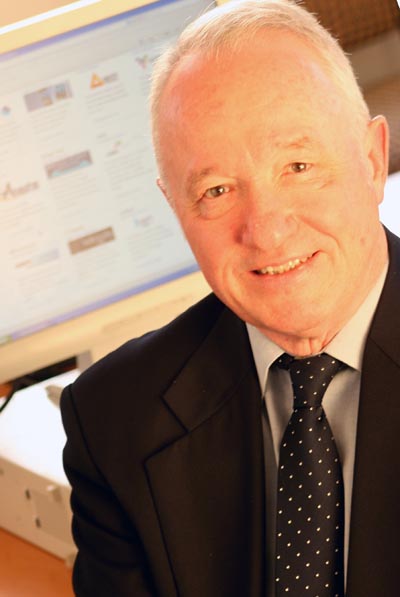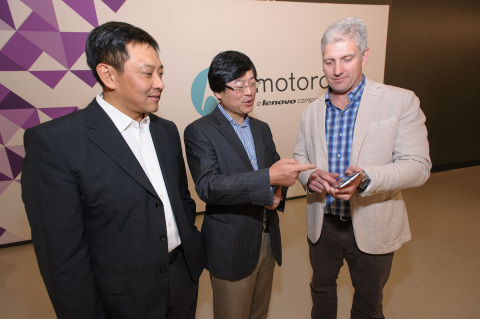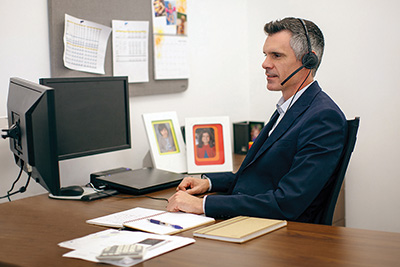EXTRA >>
WHAT digital technology can make a positive difference to your business? How do you know what is best for your particular business circumstances? Who can advise you? Who, in Australia, can help to integrate these new technologies into your business effectively? These are hard, but vital questions. Many organisations in Australia, particularly some industry associations, are striving to provide these answers to their constituents – and several are doing so with the help of an organisation that has mapped the digital revolution for 13 years and has more knowledge in this area than any other: Brisbane-based Digital Business insights.

DIGITAL Business insights (DBi) understands not only what information and communication technology (ICT) can assist particular businesses in Australia – and at what particular stages of their progress – it also knows how those that utilise such systems truly rate its effectiveness.
Such powerful and unique insights into the application of digital technologies have not come easily. It has taken DBi CEO John Sheridan and his colleagues more than 13 years of research, almost 60,000 deep surveys and 400 case studies to reach this point. 
Well before the catchphrase ‘big data’ emerged, DBi was engaged in something of that ilk, but possibly even more useful: deep data.
For example, from Mr Sheridan’s research, DBi has identified the 1600 technology companies in Australia that are rated by their customers as being best-of-breed – and they are the ones driving much of the digital innovation taking place in Australian business today, some of which leads the world.
To understand the potential for business in the digital world – a world in which traditional business models have all been disrupted – you have to understand the ecosystem and magnitude of the challenges it throws up. That is where DBi has come into its own with its long-term, multi-layered research – research that is now being applied to different business environments and sectors in Australia.
For example, well before Wotif.com listed and became a world leader in the accommodation booking sector, DBi’s research identified it as a game-changer. DBi also identified cloud-based accounting software Xero many years ago, well before its potential became clear to the wider market and scared encumbent software providers MYOB and Quickbooks.
DBi has already completed a project in the northern Melbourne region, involving 30 councils and eight Regional Development Authority areas, which has helped map the local economy and develop evidence-based pathways and problem-solving workshops for businesses there.
Another such program in the Australian Capital Territory has adapted DBi’s system to assist business development through technology adoption. Shortly DBi is expected to announce a major project of its own for its home state of Queensland, as an open proving ground for its platform.
At a base level of engagement, a business leader will be able to go on to a DBi platform, complete a survey, and receive a report on the business as it stands which shows how it compares with other companies in its sector in terms of best-of-breed technology adoption. It opens up new possibilities for business leaders, based on deep research.
UNDERSTANDING DIGITAL
John Sheridan makes the point, often, that to navigate the digital landscape, you have to understand the geography you are dealing with. That is largely what his last 13 years of ‘mapping’ have been about.
He said the challenges facing different industry sectors have both common and specific elements that require knowledge – not just data – and creativity to successfully navigate. Helping to develop that knowledge and those pathways are what the DBi system is all about.
The common form of the digital revolution across all sectors is that it provides “ever increasing connection, communication, information and collaboration at the touch of a button”.
“The major currents of the digital revolution driving the change are ever more connection, more collaboration and more integration,” Mr Sheridan said.
“As a result, innovation is supercharged and the tools of the revolution are relatively cheap, easier to use all the time, and in the hands of imaginative and agile users who are very disruptive to existing business models, sectors and systems.
“Software development is simpler than ever in an open system and open source world. Problems and issues are identified and attacked by thousands of individuals across the planet, and the results shared to build even better tools.
“Most of this activity happens in bedrooms, home offices, cafes, libraries and first floor offices in back streets, industrial estates and above shops, not just in Silicon Valley or the Washington beltway.
“New products and services are launched and fail. But the cost of failure is low and the learnings are huge. And the agile move on with new ideas, into new fertile relationships and new opportunities.
“And that is a problem for establishments of all kinds, whether corporate, government or otherwise, because the disruptive levers are more accessible than ever before and the impacts of these levers can become widespread without reference to the world that was.
“This is a paradigm shift. Power is moving from the top to the bottom of society. Power is shifting from the ‘vendor’ to the customer. Power is shifting from the few to the many. Power is being shared.”
THREATS AND OPPORTUNITIES
While the kinds of technologies business leaders are looking for to rejuvenate and re-energise their businesses in the new digital landscape are enormously varied, Mr Sheridan advises business leaders to take a prescient look at the both the threats and opportunities in order to make some well-informed decisions.
He said the massive disruption in sectors such as music, video, postal, books, newspapers, printing, real estate, travel and accommodation were well documented and had affected lives forever. By translating some stand-out successes and failures into their own business circumstances, getting good information, and looking to leaders in their sectors who are adapting fast, there was no reason business leaders could not navigate a better future.
“Apple understood the new game in 2001 and stole the high ground with iTunes,” Mr Sheridan said.
“Apple didn’t try to protect an existing business model … it changed it. It let customers become the publishers themselves and never looked back. That apparently ‘simple’ solution actually required complete understanding that the customer had changed. The power had shifted; iTunes was then simply a smart response to the new customer perspective.”
“That understanding alone is something that vendors in many sectors still struggle with. But the power shift to the customer has to be really, properly, completely and thoroughly understood before vendors can begin to create strategies to stay engaged. Most vendors just pay lip service to it, think that social media is customer engagement … then move on.”
The move to a more visual world and engaging customers and staff through video conferencing and other ‘moving pictures’ is seen as a new area of opportunity for business leaders who manage it properly.
A serious challenge will come for business leaders in adapting to presenting on camera, to making sure their on-screen communication is effective to audiences as diverse as existing customers, potential customers, staff, shareholders, board members and other stakeholders.
“The gap between broadcast quality and home video is extremely small and now anybody can be a video producer, or even a video publisher and distributor through YouTube,” Mr Sheridan said.
“Goodbye to all the video production companies that used to be found across Australia. Those that still exist have transformed dramatically in focus, to becoming equipment and studio hire companies. The volume of corporate work dried up.”
The postal industry has been disrupted by email and electronic distribution undermining traditional mail, and has re-focused on parcels and e-commerce fulfilment and delivery, Mr Sheridan said.
“Threat and opportunity arrived at the same time. Disruption always knocks incumbents off balance and it has taken postal services worldwide too long to respond positively to the new condition. Without government support it was debatable whether any would survive. In Australia, the final outcome is still in doubt.”
Even though the property industry’s changes and the rise of realestate.com.au to a dominant status has taken place, that landscape is far from settled, according to DBi research.
“Businesses in the real estate industry were early adopters of new technology,” Mr Sheridan said. “Every new technology from mobile phones, to websites, digital cameras, smart phones, iPads, and real estate management software has been adopted and incorporated swiftly as agencies look for a competitive edge.
“It is an egocentric industry with individual salespeople promoting themselves to sellers and buyers alike, and this is their strength and their downfall. Realestate.com.au should have been created and jointly owned by the major industry groups as collaborative partners. They should now be enjoying the income streams that go to News Corp. (its majority shareholder).
“This is a good example of the failing of an industry to take control of its own destiny, because of the inability of key vendor groups to collaborate. The real estate industry association should have led the way, but failed its members badly.
“As it is, all the major work on the content of the realestate.com.au portal is conducted by thousands of real estate agents themselves every day, who update the content regularly and pay for the privilege.
“However the game isn’t over yet. There are rumblings of dissatisfaction in the industry as prices for listings continue to rise. Will the industry finally collaborate and take back control? It could still be done, and sooner or later it will be.”
COLLABORATION IS THE KEY
Even industries that have endured digital disruption for decades often miss the point that the fundamental changes involve power divesting to the customer, the elimination of the ‘middle man’ and the way forward is through collaboration, according to Mr Sheridan.
“The travel industry was an early adopter of IT (information technology) with airline electronic booking systems back in the 1960s,” Mr Sheridan said. “The industry led the way for many years and when electronic booking expanded into other areas of the travel industry with cars, buses, trains and accommodation, most travel related businesses were early adopters. So the travel market is now more sophisticated than many others.
“They understood connection but didn’t really understand the power of collaboration, and the industry is still disrupted by the tourism boards, wholesalers and large travel companies hanging onto the past and not being able to collaborate effectively with the myriad of small but very important providers of ‘things to do, things to see and places to stay and eat’.
“Many travel agents have adapted to the threats of pure online competition and have leveraged their personal relationship and advisory role to fight back against the pure play online competition. But the industry is still in flux,” he said.
“So in the travel industry, the fight goes on with some areas, such as commodity ticket and accommodation booking largely in the hands of internet based booking agencies and the more complex travel relationship still in the hands of the agencies.”
Mr Sheridan said the travel industry demonstrated how the digital revolution first causes major impact and disruption, followed by rearrangement of the surviving players, with some traditional players replaced completely and some reinventing themselves to compete in the new digital environment.
“But the real opportunity remains,” he said. “Applying the iTunes principle to the industry as a whole, sooner or later somebody will finally approach travel totally from the customer perspective, not just partially and then we will see real disruption.
“As we have seen both in real estate and in travel, collaboration is a precondition for achieving the next major step. More value can be leveraged through collaboration than without it. ‘1 + 1’ can equal 11, not just two.”
“That has nothing directly to do with technology but is a by-product of the major digital currents driving everybody towards more connection, more collaboration and more integration.
“And that requires another paradigm shift in thinking and business practice, the appreciation and understanding of shared value as a model for creating and maintaining sustainable business relationships.”
Mr Sheridan, an former advertising creative director himself, has a unique perspective on where business leaders may be able to turn to.
The advertising and marketing industries – among the most disrupted and insecure and caught in the middle of the digital revolution – need to step up beyond the shallow advice paradigm they are currently offering in terms of integrated marketing strategies. They can become something much more valuable, Mr Sheridan said.
“Advertising agencies employ lots of intelligent, well-paid, creative people and if anybody can think their way out of trouble, it is them,” he said.
“They just have to recognise that the real expertise in agencies isn’t in the digital department it is in the strategy department, where the key directors and CEOs need to stop being lazy and fully understand digital for what it is – not just about websites and social media – and then take back the reins of the agencies and ensure their future.”
The one certainty of the digital revolution is the demise of ‘middle men’. Business leaders must make sure they are not among those middle men – they have to strive for higher ground.
“They (middle men) are brokers or sellers of products or services or information, and those can all be accessed in non-traditional ways because of the digital revolution,” Mr Sheridan said.
“The disruption comes from hardware and software. It comes from the drop in price making technologies accessible. It comes from the drop in price because of efficient distribution and delivery. It comes from disintermediation. It comes from re-intermediation.”
He said even “government is itself being disrupted, by informed citizens taking control of their own interests and destinies through frustration and self-reliance”.
www.db-insights.com
ends


 MOST businesses are only utilising about 40 percent of their existing computing capability, according to business and information technology (IT) application consultancy Coritsu Group.
MOST businesses are only utilising about 40 percent of their existing computing capability, according to business and information technology (IT) application consultancy Coritsu Group.


